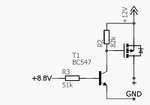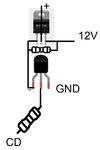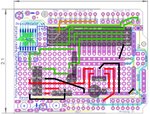Kebabix
Newbie level 5

Hi there,
I'm trying to figure out how to successfully solve my problem.
I have radio with constant 12V in it's connector and another 8.8V here, which appears only when I turn on the radio. Now, because I need this 12V, I would like to control line like this: when 8.8V is high, 12V appears; when 8.8V disappears, 12V isn't alive too. I had one solution suggested, but this circuit doesn't work properly:
**broken link removed**
When I connect constant 12V, it is here, in "+" pin. From my knowledge, 12V should appear when 8.8V is connected but unfortunately doesn't work like this here. Because I'm a newbie with such issues, I would like to ask you for some help. Maybe someone sees what is wrong here and know how to make it work right? Or maybe built another solution?
Best regards and thank you in advance for any help
I'm trying to figure out how to successfully solve my problem.
I have radio with constant 12V in it's connector and another 8.8V here, which appears only when I turn on the radio. Now, because I need this 12V, I would like to control line like this: when 8.8V is high, 12V appears; when 8.8V disappears, 12V isn't alive too. I had one solution suggested, but this circuit doesn't work properly:
**broken link removed**
When I connect constant 12V, it is here, in "+" pin. From my knowledge, 12V should appear when 8.8V is connected but unfortunately doesn't work like this here. Because I'm a newbie with such issues, I would like to ask you for some help. Maybe someone sees what is wrong here and know how to make it work right? Or maybe built another solution?
Best regards and thank you in advance for any help







